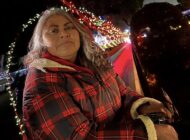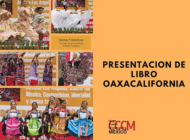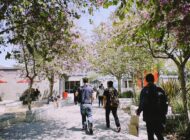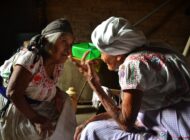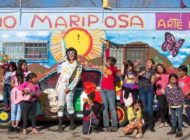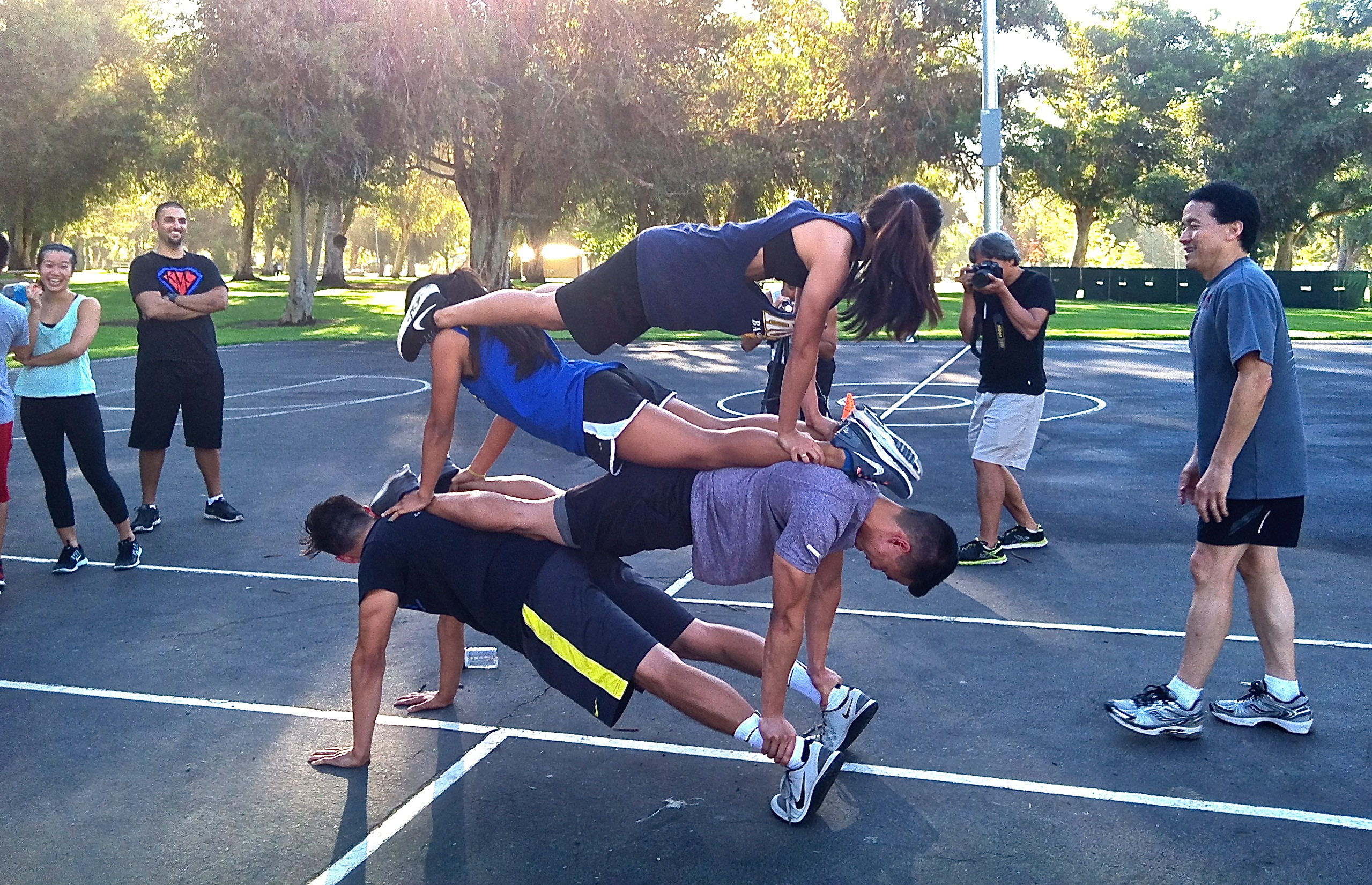“In our situation, it’s hard. You get depressed. You’re like why can’t I just apply to FAFSA, why can’t I apply to financial aid just like everybody else?”
By ALEXANDER SEBASTIÁN COREY
EL NUEVO SOL
As a college student, graphic design was more than just a hobby for Víctor Zúñiga, 25.
It was a way to express complex social issues not fully understood by himself or by those around him at the time.
Today, Zúñiga works as a graphic designer at an advertising company in Downtown Los Angeles and credits his connection to Dave Moon, his former professor and director of VISCOM, the Center for Visual Communication at California State University, Northridge, for the job that he currently has.
Outside of work, Zúñiga’s graphic design talents have served as an outlet to release anxiety and frustration.
Zúñiga graduated from CSUN with a bachelors of arts in graphic design in 2012, but the work he did while a student there is still visible today.
Many current and former students may have never met Zúñiga — he admits he spent most of his time in the Chicano Studies lobby in the Jerome Richfield building — but they’ve likely seen his designs.
Zúñiga designed the logo for the date/acquaintance rape prevention program at CSUN, Project Date, which regularly does tabling at campus events and hands out pens and other materials with the logo Zúñiga designed.
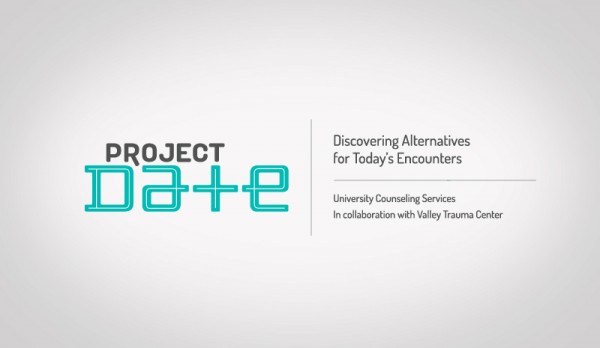
Víctor Zúñiga’s logo for Project Date is still used today, though few students know the story behind the designer.
Former students might recognize promotional materials Zúñiga made for past events for various departments on campus, including the Chicano Studies department. Zúñiga also designed a poster for an event at the Center for the Study of Latino Health and Culture at UCLA.
Despite leaving a lasting impression on his college, Zúñiga says he almost didn’t finish. He started in 2006 and finished in 2012, having had to take time off periodically.
Zúñiga says his first year at college went well because he entered with a scholarship but that by the following year, he needed to take time off in order to work and save money for tuition. This would be a recurring hassle for Zúñiga, as expenses mounted up faster than for most students.
Zúñiga is a DREAMer, an undocumented youth who was brought to the US by his parents when he was 12 years old. The term DREAMer is derived from the Development, Relief and Education for Alien Minors Act, first introduced in 2001 which would have given students like Zúñiga a path to citizenship nationwide. While the DREAM Act has stalled in Congress over the years, several states including California, New Jersey, and Washington have passed their own statewide versions of the Act that allows students to pay in-state tuition.
State versions of the DREAM Act do not protect students from deportation, but a 2012 program does.
Zúñiga graduated from college just months before the implementation of Deferred Action for Childhood Arrivals (DACA), which makes some undocumented students eligible to apply for work permits, driver’s licences, and most importantly — temporary protection from deportation.
“In our situation, it’s hard. You get depressed. You’re like why can’t I just apply to FAFSA, why can’t I apply to financial aid just like everybody else?”
Zúñiga attended CSUN before the start of DACA. To help pay for college, he worked numerous odd jobs, including one at the Northridge mall.
During his breaks, he would go to the Borders bookstore in the mall to read design-related books on topics such as typography and color theory.
Those breaks set the foundation for future work with VISCOM. VISCOM helps students get real world experience, by matching them with paying clients.
In his senior year, it was at VISCOM that Zúñiga grew most as a designer and gained contacts that would lead to a job after college, he said.
But Zúñiga was first drawn to the design program for the same reason any college kid would be — for the free food.
Moon said Zúñiga’s portfolio was ”very one-dimensional” when he first applied to VISCOM, but that he took recommendations seriously and improved his portfolio, learning more about print, motion and web design.
“He seemed to have plenty of energy, passion, and soul, which really impressed me,” said Moon. “He seemed eager to start anywhere, learn all he could, and work hard.”
At VISCOM, students work as independent employees while the director and assistants of the program handle clients.
Moon offered Zúñiga several paid opportunities to work with clients but the young designer always had an excuse for why he couldn’t take the assignments. After passing up several paid opportunities, he eventually revealed to Moon his reason why, Zúñiga said.
The director of VISCOM didn’t flinch upon learning of Zúñiga’s undocumented status. Moon found ways to make sure Zúñiga was compensated for his work, same as the other students.
Outside of VISCOM, Zúñiga created a lot of work that his classmates didn’t see – work that expressed his feelings and attitudes toward major social issues at the time, namely immigration.
Zúñiga was born in México City, México, attending elementary and a year of middle school there. His parents don’t talk about their past home much, except when they are reminiscing about the food, he said.
“There’s always hope that one day we’ll go back, at least to visit,” said Zúñiga.
At CSUN, he joined a group for undocumented students now known as Dreams to be Heard. He was inspired to join by a fellow student named Raymundo Hernández who had been creating designs surrounding the issue of immigration.
Hernández said he first met Zúñiga through a recruiter for the college and that they connected right away because of their situation as AB 540 students.
Hernández said Zúñiga changed his major to graphic design from business after talking to Hernández about the possibilities of freelancing and using the graphic design degree as an undocumented person.
When Hernández started college in the early 2000s — just after 9/11 — resentment towards undocumented immigrants was especially high, he said. Graphic design was a way to self-sustain himself as an undocumented student, he said. Freelance work didn’t require the legal documentation that full-time jobs did.
He was able to find work related to his degree, something not all of his fellow graduates at the time were able to do. Hernández says that fellow students he knew, who graduated with majors in Psychology and other Science-related fields, were unable to accept jobs in their majors after graduation.
In a nation where STEM (Science, Technology, Engineering, Math) fields are highly regarded, undocumented students who majored in them appeared to be left out.
Top researchers around the nation have said that what Hernández described at CSUN was not uncommon.
In an interview with El Nuevo Sol, Dr. Roberto G. Gonzales, assistant professor of education at Harvard University, talked about his research regarding undocumented youth and their options before DACA.
In the 2011 study, “Learning to be Illegal: Undocumented Youth and Shifting Legal Contexts in the Transition to Adulthood,” Gonzales details the transition of 150 undocumented youth in Southern California from their late teenage years and early twenties until they reached their late twenties, early thirties.
The sample included high achieving students, valedictorians, as well as young people who had left school at or before high school.
The take away from the research, Gonzales said, was that while early exiters from school went to work earlier and began living undocumented lives, their college counterparts were able to preserve a legal buffer in doing so — but only for a time.
The undocumented youth going to college appeared to be getting out ahead, but by mid to late twenties, “their paths had converged,” Gonzales said.
“Here they all were, out of school and with very little options.”
Tags: AB 540 CSUN Dream Act dreamers graphic design jóvenes latinos Los Angeles







